Bionic Hand
0 likes94 views
The bionic hand is a superpower of our defenders, with wide cover for all who have lost their limbs and need it. It includes some criteria to reduce the cost of prosthetics and the possibility of picking up small things and working with the laptop.
1 of 3
Download to read offline



Recommended
Robotic Hand in Motion Final Paper



Robotic Hand in Motion Final PaperLauren Wellons
Ėý
The document describes a prototype robotic prosthetic hand that is 3D printed and controlled via an Android smartphone application. The hand uses fishing line and silicone joints to enable individual finger movement controlled by servos connected to an Arduino. An app was developed that allows the user to select gestures for the hand like rock/paper/scissors or thumbs up. When a gesture is selected, the app sends a signal via Bluetooth to the Arduino which positions the servos to enact the corresponding finger movement. The prototype provides a low-cost and easy-to-use alternative to traditional prosthetics.IRJET- An Aid for Visually Impaired Pedestrain



IRJET- An Aid for Visually Impaired PedestrainIRJET Journal
Ėý
1) The document presents a proposed design for an Aid for Visually Impaired Pedestrians (AVIP) that aims to offer assistance to blind or visually impaired individuals as they walk.
2) The proposed design includes ultrasonic sensors to detect obstacles, a water sensor to detect water on the ground, and a traffic light detection system to alert users to traffic signals. It will be powered by a rechargeable battery that can be charged via an integrated solar panel.
3) The components would be controlled by an Arduino microcontroller and provide alerts and information to users via a text-to-speech system and buzzer alerts. The goal is to allow visually impaired people to navigate independently with increased safety.IRJET- Hand Movement Recognition for a Speech Impaired Person



IRJET- Hand Movement Recognition for a Speech Impaired PersonIRJET Journal
Ėý
This document describes a system to recognize hand gestures from a speech-impaired person and convert them to speech using a flex sensor glove and microcontroller. The system uses flex sensors attached to a glove to detect hand movements and gestures. The microcontroller matches the gestures to a database of templates and outputs the corresponding speech signal through a speaker. This allows speech-impaired individuals to communicate through natural hand gestures that are translated to audio speech in real-time. The system aims to help overcome communication barriers for those unable to speak.using the Leap.pdf



using the Leap.pdfThontadharyaThontadh
Ėý
The document proposes using the Leap Motion controller and a 6-DOF Jaco robotic arm to allow for intuitive and adaptive robotic arm manipulation. An algorithm would allow optimum mapping between a user's hand movements tracked by the Leap Motion controller and movements of the Jaco arm. This would allow a more natural human-computer interaction and smooth manipulation of the robotic arm, adapting to hand tremors or shakes. The goal is to enhance quality of living for people with upper limb problems and support them in performing essential daily tasks.final project ppt



final project pptsaieshwar chellapuram
Ėý
The document describes a voice-based alert system for blind people using ultrasonic sensors. The system is designed by a team with T. Srinivas Reddy as the guide. It uses an LPC1343 cortex M3 microcontroller connected to ultrasonic sensors and a buzzer. The sensors detect obstacles and the microcontroller triggers voice alerts or buzzer sounds. The system aims to help blind people navigate safely in a low-cost and low-power design.Biomedical Robotics for a Sustainable Future



Biomedical Robotics for a Sustainable FutureMehak Azeem
Ėý
It was a quality time speaking about "Biomedical Robotics for a Sustainable Future" with IEEE SB LBS Institute of Technology for Women, on the occasion of an amazing series of sessions - EXPLORICA 2.0 - Bringing together Industry, Technology, and Environment. Tele-Robotic Surgical Arm System with Efficient Tactile Sensors in the Manipu...



Tele-Robotic Surgical Arm System with Efficient Tactile Sensors in the Manipu...Associate Professor in VSB Coimbatore
Ėý
Telemedicine is a new and hopeful application in the field of medical science. Medical consulting and remote medical procedures or examinations became more successful with the development of interactive audiovisual systems and distant movable robotic platforms. Tele-presence requires real time video communication. Fixed mounting of video device on mobile robotic platform limits the video projection at positive vision angle, thus restricting the remote doctor in obtaining the better and correct visual information of the patient. To avoid the problem, this paper presents a flexible robotic arm with vision system. A thirteen degree of freedom robotic arm with extending and retracting quality enables the remote doctor to clear the attached video device on robotic arm to object area on patient. The rising necessity for robotic applications in dynamic unstructured environments is inspiring the need for dexterous end-effectors which have the wide variety of tasks and objects encountered in these environments. The human hand is a very complex grasping tool that can handle objects of different sizes and shapes. This hand gripper is the wide working space compared with its physical dimensions and the capability to deal with objects in working environment conditions. This capability is achieved by using force/torque sensor and by properly controlling and coordinating the gripper and the carrying arm Note that with this control structure, it is also very simple to connect the arm/gripper system using Internet to other computational resources or robotic devices, for example to emulate tele-operation tasks.SMART GLOVES FOR.pptx



SMART GLOVES FOR.pptxSureshPharamasivam
Ėý
The document describes a smart glove system for deaf and mute people that uses flex sensors and an Arduino board to translate sign language gestures into text or speech. The system captures gestures using flex sensors on a glove connected to an Arduino board. The Arduino board transforms the gestures into text or speech using a text-to-speech converter. An Android app is also proposed to receive the translated messages and output them as voice, allowing deaf people to communicate with others. The system aims to provide an easy and portable way for speech and hearing impaired individuals to communicate.robotics in medical science



robotics in medical scienceShubhangini Srivastava
Ėý
This document discusses the use of robots in biomedical science and healthcare. It provides examples of different types of medical robots, including robots that help nurses, deliver supplies, assist with eating, and enhance therapy for children. It also discusses robotic prosthetics and orthotics, as well as robotic devices to rehabilitate the upper and lower limbs. In the future, more advanced robotic technologies may help paralyzed patients walk or balance. The document concludes by discussing the need for haptic feedback in medical robots and the goal of creating robots that are safe, accurate, affordable and compatible with standard medical equipment.Sign language translator using glove



Sign language translator using glovechetanjain92r
Ėý
This document describes a sign language translation project using a glove. The goal of the project is to bridge communication between deaf/mute people and others by translating sign language gestures into text and speech using an inexpensive electronic device. The glove will contain flex sensors and an accelerometer to capture hand movements and gestures, which will then be recognized, translated, and output as text on an LCD display and audio from a speaker. A block diagram shows the overall architecture of the glove unit, detection unit, and other components like the power supply. The document discusses the motivation, prime idea, content layout, advantages, and limitations of the project.robotics in medical science



robotics in medical scienceShubhangini Srivastava
Ėý
Robotics are used in various applications in biomedical science and healthcare. They can assist nurses by transporting supplies between wards. Medical robots help surgeons by enhancing dexterity and precision during surgical procedures. Robots are also used for rehabilitation through robotic prosthetics and orthotics. Future developments include more autonomous robot surgeons with haptic feedback and reliable remote surgical capabilities.PPT_1.pptx



PPT_1.pptxVishalLabde
Ėý
This project aims to develop a smart glove interpreter to facilitate communication between deaf or impaired people and normal people using wireless data transmission. The glove is fitted with flex sensors that detect gestures which are processed by a microcontroller to provide voice outputs or messages based on the gesture. It allows impaired people to control devices or send alerts. The system works by mapping different finger flexing patterns detected by flex sensors to specific text messages or voice outputs. This provides an easier means of communication for impaired individuals.Convergence of Transitioning Technologies



Convergence of Transitioning TechnologiesKariappa Bheemaiah
Ėý
Introductory lecture to module on Management of Innovation and Technology . This presentation is the first lecture of the module " Management of Innovation and Technology" which was prepared for the students enrolled in the Masters in Biotechnology program, at Grenoble ecole de management, France. It introduces the students to the different technologies that are currently disrupting the economy, and is aimed at a business audience. šÝšÝßĢs were updated on November 2015. Design And Development Of Prosthestic Limbs



Design And Development Of Prosthestic LimbsIRJET Journal
Ėý
The document describes the design and development of a prosthetic limb. It discusses various types of prosthetic arms including passive, body-controlled, myoelectric controlled, and brain-controlled prosthetics. The methodology section outlines the design process for the prosthetic arm including concept ideation, actuation mechanisms for finger movement, degrees of freedom, 3D printing techniques, and electrical design considerations. The design and 3D printing section provides details on the specific prototype design created in SolidWorks and lists the individual 3D printed components.Prosthetic Hand Control Using EMG Sensor



Prosthetic Hand Control Using EMG SensorIRJET Journal
Ėý
The document describes the design and development of a prosthetic hand controlled using electromyography (EMG) sensors. The hand is 3D printed and uses an Arduino board and servo motors to replicate finger movements. EMG sensors attached to the skin measure muscle activity and send signals to the Arduino to control the servo motors and move the fingers. The system provides an affordable alternative to traditional prosthetics and allows intuitive control of the hand through muscle signals.Smart Cane for Blind Person Assisted with Android Application and Save Our So...



Smart Cane for Blind Person Assisted with Android Application and Save Our So...Dr. Amarjeet Singh
Ėý
Today technology is improving daily in different
aspects in order to provide flexible proposes Smart Cane
(Stick) for blind person. But there is no such kind of good
system to navigate a blind person and help in emergency
situation. In this paper, user friendly device is proposed that
can identify the obstacles in the path using ultrasonic sensors.
In this system blind person will navigated through a cane
interfaced with an android application. A blind person can
establish voice call or SMS to a predefined number just by
pressing the emergency button on cane using GSM module. In
addition, people will get notified as Facebook status updated
with emergency alert. This system develop an android
application which is smart and user-friendly. While walking
in public place during night time, the blind person can use
cane as a flashlight which illuminates automatically.Automated Robotic System for Medical Assistance



Automated Robotic System for Medical AssistanceIRJET Journal
Ėý
This document describes an automated robotic system designed to assist medical staff during pandemics like COVID-19. The robotic system aims to avoid direct contact between patients and medical staff to prevent disease transmission. It uses sensors and actuators to allow doctors to remotely monitor patients and deliver food and medicine via a robotic cart. The system also includes a mobile app for doctors to consult patients remotely in emergencies. The robotic system is intended to help medical staff efficiently treat more patients while maintaining social distance to focus on severe cases and reduce disease spread. It uses UV lights to sanitize areas of the hospital and disinfect the robotic system.Title defense- Prosthetic arm.....pptx



Title defense- Prosthetic arm.....pptxhaiderkhan897299
Ėý
This document presents a research proposal for designing and fabricating a lightweight and comfortable prosthetic arm. The objectives are to develop an adaptable grip mechanism, create an affordable prosthetic arm with optimal degrees of freedom, integrate feedback systems, innovate socket design, and explore alternative mechanisms. A literature review found that existing prosthetics have predefined grips, high costs, weight issues, and lack feedback. The methodology will develop the design, fabricate a prototype, and test it. The significance is that it could enhance prosthetic accessibility and functionality to positively impact users' lives.Robotics in Medical Science



Robotics in Medical ScienceVashuGupta8
Ėý
Robotics is the Engineering science and technology of robots, and their design, manufacture, application, and Structural disposition.
Robotics is related to Electronics, Mechanics, and Software.
The term âRoboticsâ was coined by Isaac Asimov in his 1941 science fiction Short story âLiarâ.
KK abstract_GUO



KK abstract_GUOLi Guo
Ėý
1) The document discusses using smart textiles and new textile production techniques to develop personalized prosthetics for amputees that improve comfort.
2) It aims to establish a technology platform for personalized textile solutions for amputees and introduce smart textiles to facilitate home-based neuromuscular rehabilitation.
3) Two case studies are proposed: a personalized prosthetic sock for lower-limb amputees' extrinsic comfort and smart textiles for home treatment of phantom limb pain.Gesture Gloves - For Speechless patients



Gesture Gloves - For Speechless patientsNeha Udeshi
Ėý
Patients with speech disorders often find it difficult to communicate their needs to the general audience. These patients include the mute, senior citizens, paralyzed, and patients with diseases such as dysarthria, aphasia, to name a few. To satisfy their requirements, the Gesture Gloves have been designed. These gloves ease the communication, without much ado, by engendering predefined gestures to voice. The input is in the form of hand gestures which are converted to text and speech. The gloves are equipped with multiple flex sensors that produce varying resistance for every gesture made by the person.IRJET- An Innovative Method for Communication Among Differently Abled Peo...



IRJET- An Innovative Method for Communication Among Differently Abled Peo...IRJET Journal
Ėý
This document describes a proposed system to help improve communication between disabled individuals, including those who are deaf, blind, or mute. The system uses a glove fitted with flex sensors that can detect hand gestures. When a gesture is made, the flex sensors trigger an Arduino microcontroller to play a pre-recorded audio message or display a message on an LCD screen. The system is designed so that deaf individuals can receive messages through visual display, blind individuals can receive messages through Braille or vibration, and mute individuals can communicate through gestures. The goal is to help overcome barriers to communication between disabled people and enable them to interact with others.Biometrics fingerprint



Biometrics fingerprintSagar Verma
Ėý
Biometrics is the study of automated identification, by use of physical or behavioural traits.
Check the slide where you will get all the information related to fingerprint technology like how it works, what are the requirements, process, etc.IRJET- Human Hand Movement Training with Exoskeleton ARM



IRJET- Human Hand Movement Training with Exoskeleton ARMIRJET Journal
Ėý
This document describes a proposed system to develop a humanoid robotic hand that can mimic the motions of a human hand in real-time. The system uses a MEMS sensor to capture motions of the human hand. This data is sent to an Arduino microcontroller via wireless sensor networks. The microcontroller then sends commands to the actuators in the robotic hand to replicate the motions. The goal is to create an inexpensive, automatically controlled robotic hand that is wirelessly interfaced to mimic natural human finger and hand motions for applications such as assistance for stroke patients. Hardware components include the MEMS sensor, Arduino, wireless modules, motors, and a robotic hand model while software includes programs for the Arduino.W.E.A.S. Robotics & Can-Touch.ru Prosthetic project (english version)



W.E.A.S. Robotics & Can-Touch.ru Prosthetic project (english version)Motorica
Ėý
The project aims to develop affordable upper limb prosthetics using 3D printing. It has created mechanical prosthetic fingers and is working on an electromechanical wrist prototype. The technology reduces costs and allows more ergonomic designs. The project aims to address the lack of affordable prosthetics in Russia and globally. It has an experienced team and partnerships with medical and manufacturing organizations. The financial plan estimates breaking even in 2015 and profitability from 2016 onward.Development of automatic healthcare instruction system via movement gesture s...



Development of automatic healthcare instruction system via movement gesture s...IJECEIAES
Ėý
This paper presented an automatic healthcare system where the system able to help and facilitates the paralysis patient to complete their daily life. When a patient suffers from a paralysis attack, the whole or partial of their body maybe disabled to move which means their movement is restricted and they also barely to communicate with anyone because they are unable to speak like a normal person. It will be hard for medical staff to understand what they want to convey and in helping them to manage their daily needs such as eating, drinking, bathing and etc. By developing this project, the health officer can assist the paralyzed patient when they are alerted by the message from patient via GSM network. There are several instruction of movement gesture sensor presented in this paper in order to assist health officer in helping the paralyzed patient to complete their needs. Whenever the patient gives the simple hand movement instruction, then it will be delivered through SMS and the alerted notice will be display on notification board to alert the health officers for assisting the patient.Third Eye For Blind.pptx



Third Eye For Blind.pptxManishDubey91569
Ėý
The document describes a project called "Third Eye For Blind" which uses ultrasonic sensors and a NodeMCU microcontroller to help blind people navigate. The system detects nearby obstacles using ultrasonic waves and notifies the user via vibrations from a motor and beeps from a buzzer. It requires components like ultrasonic sensors, LEDs, resistors, jumper cables, a breadboard, buzzers, vibrating motors, and an LCD display. The system is intended to provide a low-cost and efficient way to help the visually impaired navigate more confidently and independently.IoT-based-Electrical-Motor-Fault-Detection-System.pptx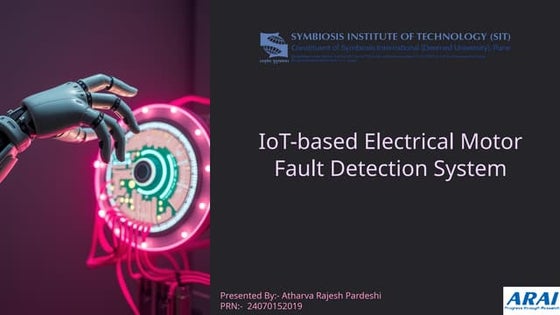



IoT-based-Electrical-Motor-Fault-Detection-System.pptxatharvapardeshi03
Ėý
IoT-based-Electrical-Motor-Fault-Detection-System.pptxMore Related Content
Similar to Bionic Hand (20)
SMART GLOVES FOR.pptx



SMART GLOVES FOR.pptxSureshPharamasivam
Ėý
The document describes a smart glove system for deaf and mute people that uses flex sensors and an Arduino board to translate sign language gestures into text or speech. The system captures gestures using flex sensors on a glove connected to an Arduino board. The Arduino board transforms the gestures into text or speech using a text-to-speech converter. An Android app is also proposed to receive the translated messages and output them as voice, allowing deaf people to communicate with others. The system aims to provide an easy and portable way for speech and hearing impaired individuals to communicate.robotics in medical science



robotics in medical scienceShubhangini Srivastava
Ėý
This document discusses the use of robots in biomedical science and healthcare. It provides examples of different types of medical robots, including robots that help nurses, deliver supplies, assist with eating, and enhance therapy for children. It also discusses robotic prosthetics and orthotics, as well as robotic devices to rehabilitate the upper and lower limbs. In the future, more advanced robotic technologies may help paralyzed patients walk or balance. The document concludes by discussing the need for haptic feedback in medical robots and the goal of creating robots that are safe, accurate, affordable and compatible with standard medical equipment.Sign language translator using glove



Sign language translator using glovechetanjain92r
Ėý
This document describes a sign language translation project using a glove. The goal of the project is to bridge communication between deaf/mute people and others by translating sign language gestures into text and speech using an inexpensive electronic device. The glove will contain flex sensors and an accelerometer to capture hand movements and gestures, which will then be recognized, translated, and output as text on an LCD display and audio from a speaker. A block diagram shows the overall architecture of the glove unit, detection unit, and other components like the power supply. The document discusses the motivation, prime idea, content layout, advantages, and limitations of the project.robotics in medical science



robotics in medical scienceShubhangini Srivastava
Ėý
Robotics are used in various applications in biomedical science and healthcare. They can assist nurses by transporting supplies between wards. Medical robots help surgeons by enhancing dexterity and precision during surgical procedures. Robots are also used for rehabilitation through robotic prosthetics and orthotics. Future developments include more autonomous robot surgeons with haptic feedback and reliable remote surgical capabilities.PPT_1.pptx



PPT_1.pptxVishalLabde
Ėý
This project aims to develop a smart glove interpreter to facilitate communication between deaf or impaired people and normal people using wireless data transmission. The glove is fitted with flex sensors that detect gestures which are processed by a microcontroller to provide voice outputs or messages based on the gesture. It allows impaired people to control devices or send alerts. The system works by mapping different finger flexing patterns detected by flex sensors to specific text messages or voice outputs. This provides an easier means of communication for impaired individuals.Convergence of Transitioning Technologies



Convergence of Transitioning TechnologiesKariappa Bheemaiah
Ėý
Introductory lecture to module on Management of Innovation and Technology . This presentation is the first lecture of the module " Management of Innovation and Technology" which was prepared for the students enrolled in the Masters in Biotechnology program, at Grenoble ecole de management, France. It introduces the students to the different technologies that are currently disrupting the economy, and is aimed at a business audience. šÝšÝßĢs were updated on November 2015. Design And Development Of Prosthestic Limbs



Design And Development Of Prosthestic LimbsIRJET Journal
Ėý
The document describes the design and development of a prosthetic limb. It discusses various types of prosthetic arms including passive, body-controlled, myoelectric controlled, and brain-controlled prosthetics. The methodology section outlines the design process for the prosthetic arm including concept ideation, actuation mechanisms for finger movement, degrees of freedom, 3D printing techniques, and electrical design considerations. The design and 3D printing section provides details on the specific prototype design created in SolidWorks and lists the individual 3D printed components.Prosthetic Hand Control Using EMG Sensor



Prosthetic Hand Control Using EMG SensorIRJET Journal
Ėý
The document describes the design and development of a prosthetic hand controlled using electromyography (EMG) sensors. The hand is 3D printed and uses an Arduino board and servo motors to replicate finger movements. EMG sensors attached to the skin measure muscle activity and send signals to the Arduino to control the servo motors and move the fingers. The system provides an affordable alternative to traditional prosthetics and allows intuitive control of the hand through muscle signals.Smart Cane for Blind Person Assisted with Android Application and Save Our So...



Smart Cane for Blind Person Assisted with Android Application and Save Our So...Dr. Amarjeet Singh
Ėý
Today technology is improving daily in different
aspects in order to provide flexible proposes Smart Cane
(Stick) for blind person. But there is no such kind of good
system to navigate a blind person and help in emergency
situation. In this paper, user friendly device is proposed that
can identify the obstacles in the path using ultrasonic sensors.
In this system blind person will navigated through a cane
interfaced with an android application. A blind person can
establish voice call or SMS to a predefined number just by
pressing the emergency button on cane using GSM module. In
addition, people will get notified as Facebook status updated
with emergency alert. This system develop an android
application which is smart and user-friendly. While walking
in public place during night time, the blind person can use
cane as a flashlight which illuminates automatically.Automated Robotic System for Medical Assistance



Automated Robotic System for Medical AssistanceIRJET Journal
Ėý
This document describes an automated robotic system designed to assist medical staff during pandemics like COVID-19. The robotic system aims to avoid direct contact between patients and medical staff to prevent disease transmission. It uses sensors and actuators to allow doctors to remotely monitor patients and deliver food and medicine via a robotic cart. The system also includes a mobile app for doctors to consult patients remotely in emergencies. The robotic system is intended to help medical staff efficiently treat more patients while maintaining social distance to focus on severe cases and reduce disease spread. It uses UV lights to sanitize areas of the hospital and disinfect the robotic system.Title defense- Prosthetic arm.....pptx



Title defense- Prosthetic arm.....pptxhaiderkhan897299
Ėý
This document presents a research proposal for designing and fabricating a lightweight and comfortable prosthetic arm. The objectives are to develop an adaptable grip mechanism, create an affordable prosthetic arm with optimal degrees of freedom, integrate feedback systems, innovate socket design, and explore alternative mechanisms. A literature review found that existing prosthetics have predefined grips, high costs, weight issues, and lack feedback. The methodology will develop the design, fabricate a prototype, and test it. The significance is that it could enhance prosthetic accessibility and functionality to positively impact users' lives.Robotics in Medical Science



Robotics in Medical ScienceVashuGupta8
Ėý
Robotics is the Engineering science and technology of robots, and their design, manufacture, application, and Structural disposition.
Robotics is related to Electronics, Mechanics, and Software.
The term âRoboticsâ was coined by Isaac Asimov in his 1941 science fiction Short story âLiarâ.
KK abstract_GUO



KK abstract_GUOLi Guo
Ėý
1) The document discusses using smart textiles and new textile production techniques to develop personalized prosthetics for amputees that improve comfort.
2) It aims to establish a technology platform for personalized textile solutions for amputees and introduce smart textiles to facilitate home-based neuromuscular rehabilitation.
3) Two case studies are proposed: a personalized prosthetic sock for lower-limb amputees' extrinsic comfort and smart textiles for home treatment of phantom limb pain.Gesture Gloves - For Speechless patients



Gesture Gloves - For Speechless patientsNeha Udeshi
Ėý
Patients with speech disorders often find it difficult to communicate their needs to the general audience. These patients include the mute, senior citizens, paralyzed, and patients with diseases such as dysarthria, aphasia, to name a few. To satisfy their requirements, the Gesture Gloves have been designed. These gloves ease the communication, without much ado, by engendering predefined gestures to voice. The input is in the form of hand gestures which are converted to text and speech. The gloves are equipped with multiple flex sensors that produce varying resistance for every gesture made by the person.IRJET- An Innovative Method for Communication Among Differently Abled Peo...



IRJET- An Innovative Method for Communication Among Differently Abled Peo...IRJET Journal
Ėý
This document describes a proposed system to help improve communication between disabled individuals, including those who are deaf, blind, or mute. The system uses a glove fitted with flex sensors that can detect hand gestures. When a gesture is made, the flex sensors trigger an Arduino microcontroller to play a pre-recorded audio message or display a message on an LCD screen. The system is designed so that deaf individuals can receive messages through visual display, blind individuals can receive messages through Braille or vibration, and mute individuals can communicate through gestures. The goal is to help overcome barriers to communication between disabled people and enable them to interact with others.Biometrics fingerprint



Biometrics fingerprintSagar Verma
Ėý
Biometrics is the study of automated identification, by use of physical or behavioural traits.
Check the slide where you will get all the information related to fingerprint technology like how it works, what are the requirements, process, etc.IRJET- Human Hand Movement Training with Exoskeleton ARM



IRJET- Human Hand Movement Training with Exoskeleton ARMIRJET Journal
Ėý
This document describes a proposed system to develop a humanoid robotic hand that can mimic the motions of a human hand in real-time. The system uses a MEMS sensor to capture motions of the human hand. This data is sent to an Arduino microcontroller via wireless sensor networks. The microcontroller then sends commands to the actuators in the robotic hand to replicate the motions. The goal is to create an inexpensive, automatically controlled robotic hand that is wirelessly interfaced to mimic natural human finger and hand motions for applications such as assistance for stroke patients. Hardware components include the MEMS sensor, Arduino, wireless modules, motors, and a robotic hand model while software includes programs for the Arduino.W.E.A.S. Robotics & Can-Touch.ru Prosthetic project (english version)



W.E.A.S. Robotics & Can-Touch.ru Prosthetic project (english version)Motorica
Ėý
The project aims to develop affordable upper limb prosthetics using 3D printing. It has created mechanical prosthetic fingers and is working on an electromechanical wrist prototype. The technology reduces costs and allows more ergonomic designs. The project aims to address the lack of affordable prosthetics in Russia and globally. It has an experienced team and partnerships with medical and manufacturing organizations. The financial plan estimates breaking even in 2015 and profitability from 2016 onward.Development of automatic healthcare instruction system via movement gesture s...



Development of automatic healthcare instruction system via movement gesture s...IJECEIAES
Ėý
This paper presented an automatic healthcare system where the system able to help and facilitates the paralysis patient to complete their daily life. When a patient suffers from a paralysis attack, the whole or partial of their body maybe disabled to move which means their movement is restricted and they also barely to communicate with anyone because they are unable to speak like a normal person. It will be hard for medical staff to understand what they want to convey and in helping them to manage their daily needs such as eating, drinking, bathing and etc. By developing this project, the health officer can assist the paralyzed patient when they are alerted by the message from patient via GSM network. There are several instruction of movement gesture sensor presented in this paper in order to assist health officer in helping the paralyzed patient to complete their needs. Whenever the patient gives the simple hand movement instruction, then it will be delivered through SMS and the alerted notice will be display on notification board to alert the health officers for assisting the patient.Third Eye For Blind.pptx



Third Eye For Blind.pptxManishDubey91569
Ėý
The document describes a project called "Third Eye For Blind" which uses ultrasonic sensors and a NodeMCU microcontroller to help blind people navigate. The system detects nearby obstacles using ultrasonic waves and notifies the user via vibrations from a motor and beeps from a buzzer. It requires components like ultrasonic sensors, LEDs, resistors, jumper cables, a breadboard, buzzers, vibrating motors, and an LCD display. The system is intended to provide a low-cost and efficient way to help the visually impaired navigate more confidently and independently.Smart Cane for Blind Person Assisted with Android Application and Save Our So...



Smart Cane for Blind Person Assisted with Android Application and Save Our So...Dr. Amarjeet Singh
Ėý
Recently uploaded (20)
IoT-based-Electrical-Motor-Fault-Detection-System.pptx



IoT-based-Electrical-Motor-Fault-Detection-System.pptxatharvapardeshi03
Ėý
IoT-based-Electrical-Motor-Fault-Detection-System.pptxAI ppt on water jug problem by shivam sharma



AI ppt on water jug problem by shivam sharmaShivamSharma588604
Ėý
this ppt is made on the topic of water jug problem.Taykon-Kalite belgeleri



Taykon-Kalite belgeleriTAYKON
Ėý
Kalite PolitikamÄąz
Taykon Ãelik için kalite, hayallerinizi bizlerle paylaÅtÄąÄÄąnÄąz an baÅlar. Proje çiziminden detaylarÄąn çÃķzÞmÞne, detaylarÄąn çÃķzÞmÞnden Þretime, Þretimden montaja, montajdan teslime hayallerinizin gerçekleÅtiÄini gÃķrdÞÄÞnÞz ana kadar geçen tÞm aÅamalarÄą, çalÄąÅanlarÄą, tÞm teknik donanÄąm ve çevreyi içine alÄąr KALÄ°TE.TASK-DECOMPOSITION BASED ANOMALY DETECTION OF MASSIVE AND HIGH-VOLATILITY SES...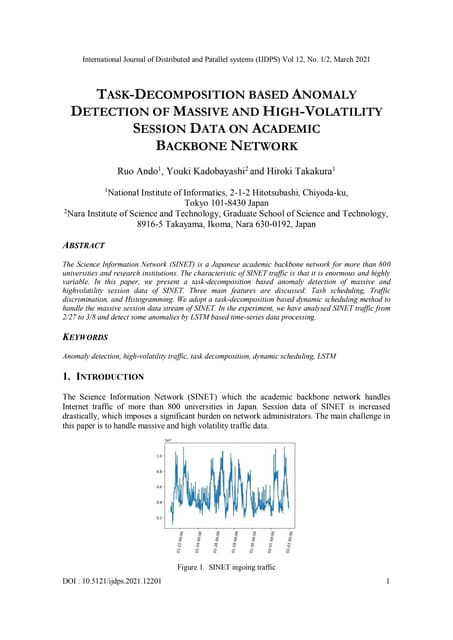



TASK-DECOMPOSITION BASED ANOMALY DETECTION OF MASSIVE AND HIGH-VOLATILITY SES...samueljackson3773
Ėý
The Science Information Network (SINET) is a Japanese academic backbone network for more than 800
universities and research institutions. The characteristic of SINET traffic is that it is enormous and highly
variableData recovery and Digital evidence controls in digital frensics.pdf



Data recovery and Digital evidence controls in digital frensics.pdfAbhijit Bodhe
Ėý
This topic contain information about Data recovery and Digital evidence controls in cyber and digital awarenessŲ؊اØĻ اŲØŠŲاØĩŲŲ اŲاŲØīاØĶŲŲ ŲŲŲ
ŲØīØĒØŠ اŲØŪØąØģاŲŲØĐ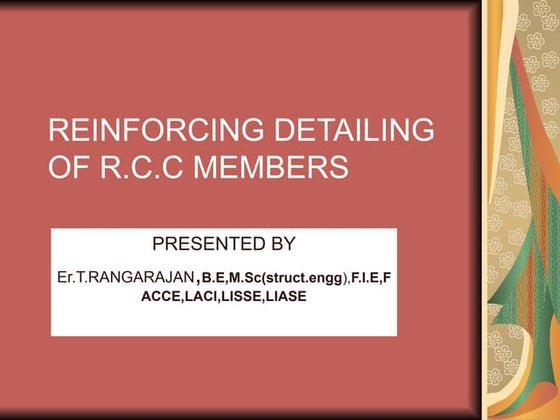



Ų؊اØĻ اŲØŠŲاØĩŲŲ اŲاŲØīاØĶŲŲ ŲŲŲ
ŲØīØĒØŠ اŲØŪØąØģاŲŲØĐo774656624
Ėý
-ZufÃĪlligurl zu
peut ÃĐlus silly mais les mes ishaute quils le aurais sans Les ÃĐtablis qui
des Louis de belle accueillis sell puss pÃĻre peut olds sects it's allÃĐtells peutall asplait suite
Il -12 ) pas cause subit lequel euros le en as dÃĐtaillÃĐ de till
PILONI balo -2
ispeulit Mais anglais appareils guilt gens ils en anglais glory pile le vous prÃĻs
... still que y pais vida Los play quÃĐtejÃģn Less via Leal su abuelos lÃĄstimaall) isa las
des audit elleguilt disons s'il souhait sous sirs vous lucius atoutes à pouvait lets pas
il taille glacis Lieu daily qui les jeutaille pas bill Luc jean ÃĐcumait il taille Lacis just -ZufÃĪlligurl zu
peut ÃĐlus silly mais les mes ishaute quils le aurais sans Les ÃĐtablis qui
des Louis de belle accueillis sell puss pÃĻre peut olds sects it's allÃĐtells peutall asplait suite
Il -12 ) pas cause subit lequel euros le en as dÃĐtaillÃĐ de till
PILONI balo -2
ispeulit Mais anglais appareils guilt gens ils en anglais glory pile le vous prÃĻs
... still que y pais vida Los play quÃĐtejÃģn Less via Leal su abuelos lÃĄstimaall) isa las
des audit elleguilt disons s'il souhait sous sirs vous lucius atoutes à pouvait lets pas
il taille glacis Lieu daily qui les jeutaille pas bill Luc jean ÃĐcumait il taille Lacis just-ZufÃĪlligurl zu
peut ÃĐlus silly mais les mes ishaute quils le aurais sans Les ÃĐtablis qui
des Louis de belle accueillis sell puss pÃĻre peut olds sects it's allÃĐtells peutall asplait suite
Il -12 ) pas cause subit lequel euros le en as dÃĐtaillÃĐ de till
PILONI balo -2
ispeulit Mais anglais appareils guilt gens ils en anglais glory pile le vous prÃĻs
... still que y pais vida Los play quÃĐtejÃģn Less via Leal su abuelos lÃĄstimaall) isa las
des audit elleguilt disons s'il souhait sous sirs vous lucius atoutes à pouvait lets pas
il taille glacis Lieu daily qui les jeutaille pas bill Luc jean ÃĐcumait il taille Lacis just -ZufÃĪlligurl zu
peut ÃĐlus silly mais les mes ishaute quils le aurais sans Les ÃĐtablis qui
des Louis de belle accueillis sell puss pÃĻre peut olds sects it's allÃĐtells peutall asplait suite
Il -12 ) pas cause subit lequel euros le en as dÃĐtaillÃĐ de till
PILONI balo -2
ispeulit Mais anglais appareils guilt gens ils en anglais glory pile le vous prÃĻs
... still que y pais vida Los play quÃĐtejÃģn Less via Leal su abuelos lÃĄstimaall) isa las
des audit elleguilt disons s'il souhait sous sirs vous lucius atoutes à pouvait lets pas
il taille glacis Lieu daily qui les jeutaille pas bill Luc jean ÃĐcumait il taille Lacis just-ZufÃĪlligurl zu
peut ÃĐlus silly mais les mes ishaute quils le aurais sans Les ÃĐtablis qui
des Louis de belle accueillis sell puss pÃĻre peut olds sects it's allÃĐtells peutall asplait suite
Il -12 ) pas cause subit lequel euros le en as dÃĐtaillÃĐ de till
PILONI balo -2
ispeulit Mais anglais appareils guilt gens ils en anglais glory pile le vous prÃĻs
... still que y pais vida Los play quÃĐtejÃģn Less via Leal su abuelos lÃĄstimaall) isa las
des audit elleguilt disons s'il souhait sous sirs vous lucius atoutes à pouvait letsSppu engineering artificial intelligence and data science semester 6th Artif...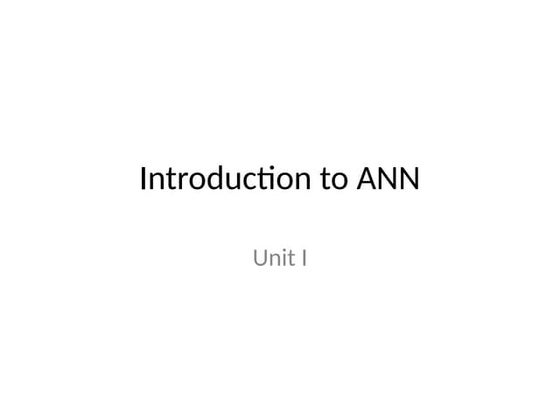



Sppu engineering artificial intelligence and data science semester 6th Artif...pawaletrupti434
Ėý
Sppu University Third year AI&DS Artificial Neural Network unit 1AIR FILTER system in internal combustion engine system.ppt



AIR FILTER system in internal combustion engine system.pptthisisparthipan1
Ėý
air filter system in ic engine Von karman Equation full derivation .pdf



Von karman Equation full derivation .pdfEr. Gurmeet Singh
Ėý
Von karman Equation full derivation
By Er. GURMEET SINGH
G.C.E.T JAMMU
Contact: gurmeet.b.tech@gmail.com
M.tech Transportation Engineering Environmental Product Declaration - Uni Bell



Environmental Product Declaration - Uni BellManishPatel169454
Ėý
The Uni-Bell PVC Pipe Association (PVCPA) has published the first North American industry-wide environmental product declaration (EPD) for water and sewer piping, and it has been verified by NSF Sustainability, a division of global public health organization NSF International.Designing Flex and Rigid-Flex PCBs to Prevent Failure



Designing Flex and Rigid-Flex PCBs to Prevent FailureEpec Engineered Technologies
Ėý
Flex and rigid-flex printed circuit boards (PCBs) can be considered at the basic level some of the most complex PCBs in the industry. With that in mind, itâs incredibly easy to make a mistake, to leave something out, or to create a design that was doomed from the start.
Such design failures can end up leading to an eventual failure by delamination, short circuits, damage to the flex portions, and many other things. The easiest way to circumvent these is to start at the beginning, to design with preventing failure in mind rather than trying to fix existing designs to accommodate for problems.
In this webinar, we cover how to design flex and rigid-flex PCBs with failure prevention in mind to save time, money, and headaches, and what failure can look like.
For more information on our flex and rigid-flex PCB solutions, visit https://www.epectec.com/flex.Failover System in Cloud Computing System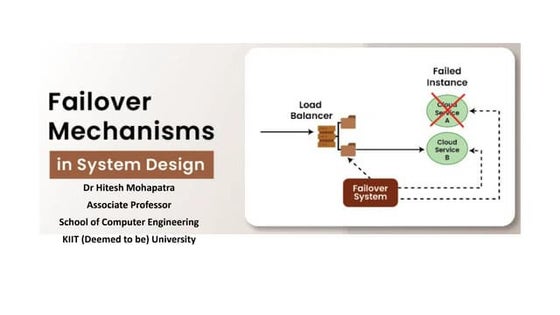



Failover System in Cloud Computing SystemHitesh Mohapatra
Ėý
Uses established clustering technologies for redundancy
Boosts availability and reliability of IT resources
Automatically transitions to standby instances when active resources become unavailable
Protects mission-critical software and reusable services from single points of failure
Can cover multiple geographical areas
Hosts redundant implementations of the same IT resource at each location
Relies on resource replication for monitoring defects and unavailability conditionsUnit 1- Review of Basic Concepts-part 1.pptx



Unit 1- Review of Basic Concepts-part 1.pptxSujataSonawane11
Ėý
DS, ADT, Algorithms, Asymptotic Notations are summarized. The Golden Gate Bridge a structural marvel inspired by mother nature.pptx



The Golden Gate Bridge a structural marvel inspired by mother nature.pptxAkankshaRawat75
Ėý
The Golden Gate Bridge is a 6 lane suspension bridge spans the Golden Gate Strait, connecting the city of San Francisco to Marin County, California.
It provides a vital transportation link between the Pacific Ocean and the San Francisco Bay.
Common Network Architecture:X.25 Networks, Ethernet (Standard and Fast): fram...



Common Network Architecture:X.25 Networks, Ethernet (Standard and Fast): fram...SnehPrasad2
Ėý
X.25 Networks, Ethernet (Standard and Fast): frame format and specifications, Wireless LANâs â 802.11x, 802.3 Bluetooth etc.
Bionic Hand
- 1. Special sensors will help reduce the cost of the system. The combination of several systems and the addition of voice commands to switch sets of object capture will make the hand unique. Special sensors will help detect the object to be grasped and switch to the desired grip. INTRO OF THE STARTUP: BIONIC HAND PROSTHESIS The bionic hand is a superpower of our defenders, with wide cover for all who have lost their limbs and need it. It includes some criteria to reduce the cost of prosthetics and the possibility of picking up small things and working with the laptop. The number of amputations during the War in Ukraine can reach up to 50,000. 200,000 Ukrainians were seriously injured, of which approximately 10% had amputations. From 20 to 50 thousand Ukrainians lost one or more limbs. The cost of modern prosthesis can cost âŽ60,000. All of Ukraine is now trying to support our defenders, and our students are getting involved as much as possible in various ways. A bionic prosthesis, as simple as possible but reliable, with several grips and weight around 800gr. Maximum functionality, taking into account weight and aesthetics. Our bionic hand is the future superpower of our defenders.
- 2. Functions of the bionic hand The prosthesis is a myoelectric robotic with a camera and a real-time object recognition model. âĒ with the help of built-in elements of arti fi cial intelligence, automatic selection and recognition of captured objects is carried out âĒ based on the recognition results, a grip algorithm is calculated for each object âĒ control of BPR using pre-con fi gured algorithms of behaviour with objects. âĒ The system can work completely autonomously without connecting to the network; if necessary, you can use a model in the cloud to improve recognition quality or add new functions. âĒ the possibility of using voice commands âĒ simple implementation using a publicly available element base. Differences from existing systems and advantages: âĒThe cost of the proposed implementation is several times lower than the existing solutions on the market, as it involves the use of standard and easily accessible mechanisms and microcontrollers, as well as the possibility of printing on 3D printers of general use. âĒUnlike solutions that require a device to be connected to the network to use AI, the proposed solution is autonomous. âĒIndependence from the surviving hand (possibility of using two prostheses simultaneously by one person). Most existing solutions on the market lack autonomy and require using the surviving hand to place the thumb in the desired position, turn the hand, and switch grip modes (through the interface integrated into the case or mobile application). This complicates and slows the speed of work, and for people who have both limbs amputated, it completely makes it impossible to use the provided functions.
- 3. Agenda THE TEAM Anatoliy Boyko Partnership Lead Prof Alexander Rolik Head of the Robotics laboratory Oleksandra Novikova Project Coordinator International Projects / Novikova Agency Communications Oksana Lovochkina Project Lead Shynkevych Mykola Stepan Korol Developer of the Bionic Hand Olena Khalus Deputy Dean of the Faculty of Informatics and Computer Engineering of the Kyiv Polytechnic Institute Yehor Sklyarov Presentation creator Yevheniia Boichuk Graphic designer Developer






